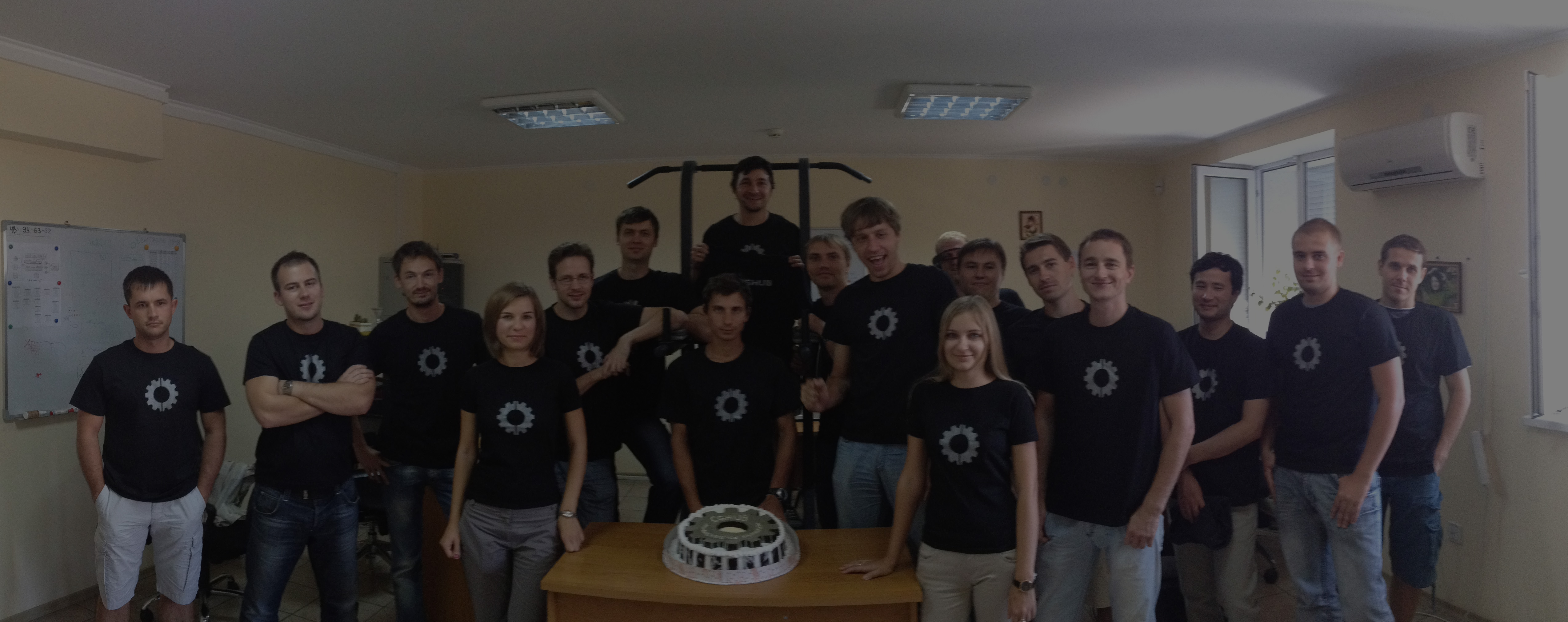For a startup, building an MVP (minimal viable product) is the key objective and the matter of survival so no experimentation and fluctuations can be allowed. This means the core team of developers has to form at the early stages of startup and build from the round up. So what are the options and how can things go?
Let’s project the most illustrative outcomes:
Scenario 1. Engineering outsourcing model

Why Extended Team Model Beats Outsourcing | Shakuro
In this scenario, you as a software project owner provide a specification, business logic and look for the implementation team that can turn your vision into reality. There is no outsourced business analyst involved and there is a clear responsibility distinction between the departments, roughly, you say what you want and they build no questions asked in terms of project’s business logic. You also deliver design direction without hiring an outsourced designer.
This scenario is highly applicable in case of your knowledge of how the process is organized, experience in scrums, hiring contractors, dealing with remote workflow model and so on. As an established entrepreneur you can efficiently manage this type of scenario, cut the costs, and deliver a standalone product. However, if you are new in the business or the industry, this approach involves the following risks:
-
Development team cost Vs quality ratio may lack transparency.
-
Development service provider may lack flexibility.
-
Outsourced development team will work on their terms and schedules.
-
Contractors’ lack of management understanding and analysis.
-
Indirect transitions between sprints and dependance of reports.
Addressing these potential risks might lead you to the next scenario, where the insufficient business or industry experience can be made up for by introducing an outsourced project manager.
Scenario 2. Management outsourcing model
A project manager who supervises the entire lifecycle of a project, selects the remote teams, breaks the process into segments and reports directly to the project owner as well as receives the tasks and ideas to work with. Outsourced teams led by a project manager from that team, colocated with the team, and representing the client have shown superior results to just development/code outsourcing models.
As a digital agency with 10-year experience in outsourcing web and mobile design and development, we strongly believe in powerful management as the most efficient production acceleration means.

Why Extended Team Model Beats Outsourcing |Shakuro
This scenario incorporates ore of a full-lifecycle development of the project with the key player being a project manager. The leverage that the PM has on the project is huge and this becomes part of the risk because flexibility and versatility are compromised depending on the PM’s decisions.
Scenario 3. Extended Team Model
One of the outsourcing models gaining popularity throughout the industry is Extended Team Model (ETM). Offshore development has been around, as an established operation strategy, so how is ETM any different?
Imagine your head-office team spread through the continent… or the planet. Without being to comic-book-villainish, this means you can extend your team to reach the human talent resources that are not available locally, but are there for you through a number of efficient mediators.
Having a remote hired team becomes a headache at times when the transparency gets compromised due to the fact that the team might have several projects simultaneously and the prioritization is something you can’t influence. This is the reason for one-project-long partnership and hassle repeating with every next endeavor. The ETM model tackles the principle of contractorship, turning a remote team into a full-blown branch of your enterprise.

Why Extended Team Model Beats Outsourcing | Shakuro
The ETM brings all the benefits of remote development financially and logistically but also tackles a number of issues of traditional outsourcing. The main one being a complete integration of a remote team into your workflow. This means you can synchronize team’s efforts and have the process running at your terms not only in management, but in all the segments of development and design.
An extended team is only occupied with one project and deals with one specific goal – delivering a robust product on time. Also, the ETM project does not have to end after the launch and have all the key people move on to their next project. For a startup, the launch of MVP means the beginning of the journey where it’s extremely important to develop the original idea into a bigger entity. Your extended team does not fluctuate to different projects and does not close at the launch. Instead, they bring it to the next level as their understanding of the product’s business logic and appreciation grows.
The advantages of Extended Team Model
At Shakuro, we’ve had all sorts of experience working with multiple engagement models, including ETM and we thrive in that particular environment and here’s why:
-
Constant control of time/effort ratio of your project.
You can apply time or task-driven control of your extended team’s performance with a 100% transparency and synchronization.
-
Growth opportunities without distracting the home team.
You might have a successful project your in-house team has been working on and you plan on them continuing developing it. You can delegate all the new and side projects to your extended team.
-
Direct communication between workers of different departments.
Effective communication in remote teams depends on managers. With an extended team you can establish a direct contact between all the employees.
-
Common contribution to success and equal responsibilities.
The team is involved in the complete cycle of development, not just an isolated part of it which makes for a better transition and continuity.
-
Employee training throughout the enterprise.
Having your corporate integrity shining through all your products is important and can only be achieved by extensive and continuous team training throughout the company departments.
-
Reduced staff fluctuations.
Extended team is part of a bigger team and employees associate better with large companies which reduces turnover and leads to a steady flow.

Why Extended Team Model Beats Outsourcing | Shakuro
With the GSD (Global Software Development) gaining popularity over the last decade, the Extended Team Model seems to be the next stage of outsourcing. Having an affiliation of your business workshop rather than dealing with contractors offers more flexibility and a new level of dedication. Your extended team may shrink and extend according to the objectives set and the resources, while maintaining its core.
